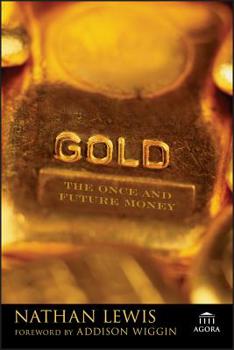Gold: The Once and Future Money
Select Format
Select Condition 
Book Overview
Governments and central bankers around the world today unanimously agree on the desirability of stable money, ever more so after some monetary disaster has reduced yet another economy to smoking ruins. Lewis shows how gold provides the stability needed to foster greater prosperity and productivity throughout the world. He offers an insightful look at money in all its forms, from the seventh century B.C. to the present day, explaining in straightforward layman's terms the effects of inflation, deflation, and floating currencies along with their effect on prices, wages, taxes, and debt. He explains how the circulation of money is regulated by central banks and, in the process, demystifies the concepts of supply, demand, and the value of currency. And he illustrates how higher taxes diminish productivity, trade, and the stability of money. Lewis also provides an entertaining history of U.S. money and offers a sobering look at recent currency crises around the world, including the Asian monetary crisis of the late 1990s and the devastating currency devaluations in Russia, China, Mexico, and Yugoslavia.
Lewis's ultimate conclusion is simple but powerful: gold has been adopted as money because it works. The gold standard produced decades and even centuries of stable money and economic abundance. If history is a guide, it will be done again.
Nathan Lewis was formerly the chief international economist of a firm that provided investment research for institutions. He now works for an asset management company based in New York. Lewis has written for the Financial Times, Asian Wall Street Journal, Japan Times, Pravda, and other publications. He has appeared on financial television in the United States, Japan, and the Middle East.





